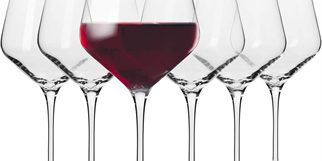Wine glass tasting, often referred to as “sensory evaluation,” is an essential skill for wine enthusiasts and professionals. In this blog, we’ll provide a comprehensive guide on how to conduct wine glass tasting and appreciate the nuances of different wines.
Glass Selection
Start by selecting the appropriate wine glass for the type of wine you’re tasting. Red wine glasses for reds, white wine glasses for whites, and sparkling wine glasses for bubbly. The right glass shape will enhance the wine’s aroma and flavor.
Visual Evaluation
Examine the wine’s appearance by holding the glass against a white background. Note the color, clarity, and intensity. This visual assessment can offer insights into the wine’s age and grape variety.
Aromatics
Swirl the wine gently in the glass to release its aromas. Insert your nose into the glass and inhale slowly, identifying the wine’s bouquet. Note any scents of fruits, flowers, spices, or oak. Aromatics are a key component of wine appreciation.
Taste and Palate
Take a small sip and let the wine coat your palate. Pay attention to the wine’s taste, including its flavor, acidity, sweetness, and tannins. Consider how the wine evolves as you hold it in your mouth and how it finishes.
Evaluating Balance
Assess the balance of the wine, considering whether its components—acidity, sweetness, and tannins—are harmonious. Balance is a crucial factor in wine quality.
Conclusion
After evaluating the wine’s appearance, aroma, taste, and balance, form your conclusions and overall impressions. Consider how the wine aligns with your personal preferences and the occasion for which it’s intended.
Wine glass tasting is a skill that improves with practice. By following these guidelines, you can develop a deeper appreciation for wine and its complexities.
















